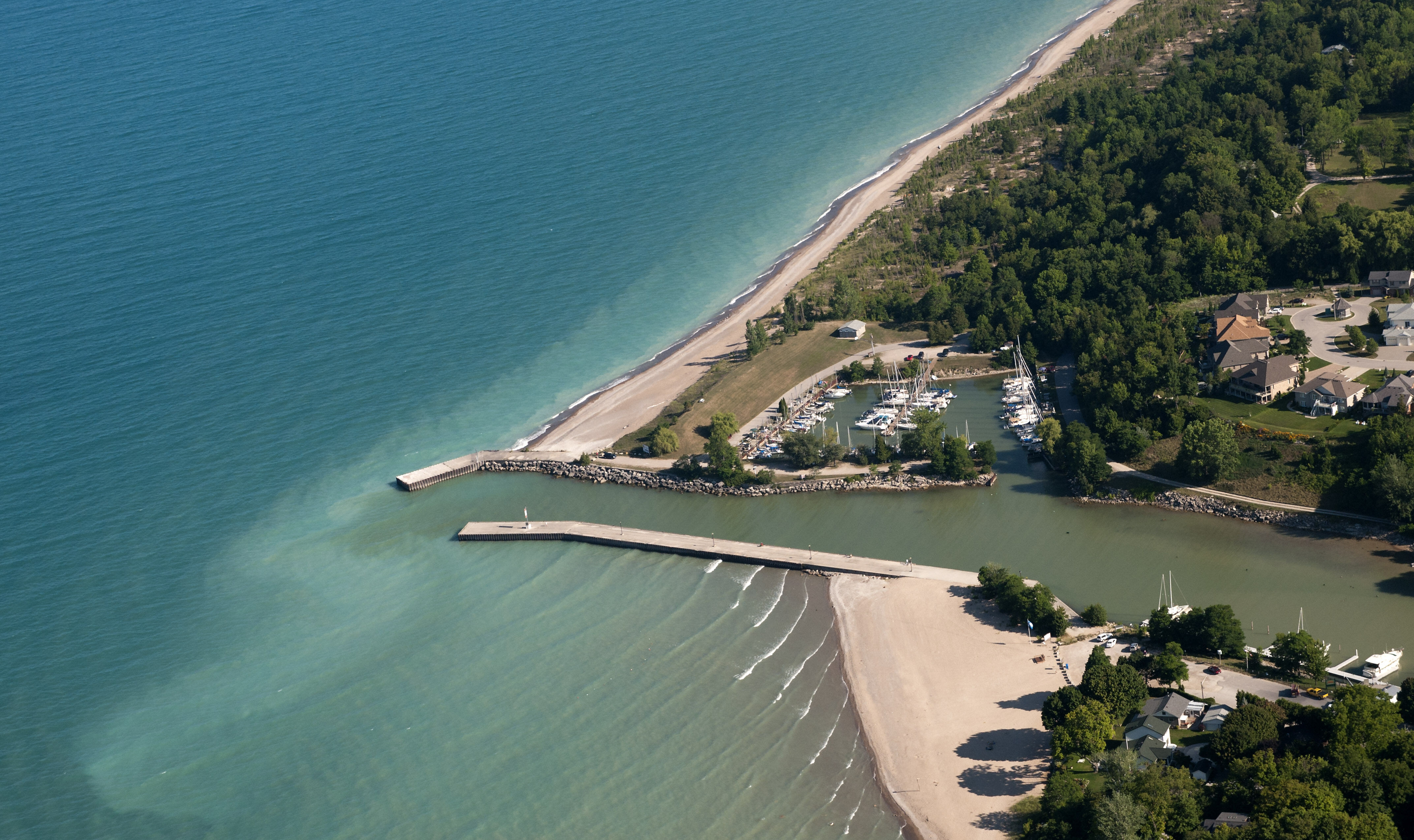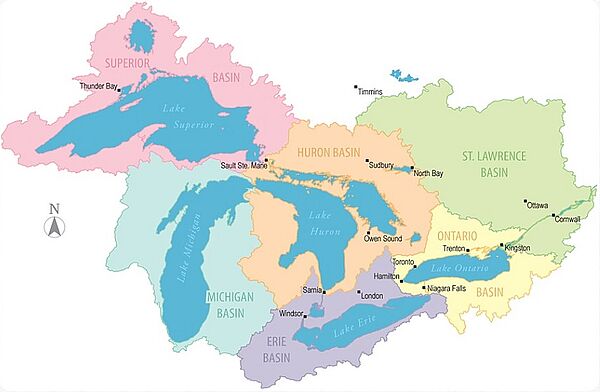Great Lakes
Conservation Authorities and the Great Lakes
Conservation Authorities planned programs and activities help Ontario to protect the important resources within the Great Lakes and St. Lawrence River, and their watersheds. This area is rich with forests, wetlands, rivers, streams, aquifers, and plants and animals that supply us with water for drinking, manufacturing, agriculture, energy production, fishing, food processing and many other uses. We are also drawn to these waters for recreational activities such as swimming, boating, camping and picnicking.
Conservation Authorities supports Ontario's Great Lakes Strategy which recognizes important connections between the Great Lakes and the contributing watersheds. The strategy also supports the protection of Great Lakes ecosystems and their functions including surface and groundwater quality and quantity, habitat and species, and considerations for climate change.
Protecting the Great Lakes and St. Lawrence River, and their watersheds is everyone’s responsibility because what happens upstream can impact conditions downstream. replica rolex yacht master
Learn how Conservation Authorities contribute to the health of the Great Lakes.
Great Lakes and the St. Lawrence River
Ninety per cent of Ontarians live in watersheds managed by a Conservation Authority. These watersheds are nestled into the Great Lakes and St. Lawrence River basin.
Explore the Great Lakes and St. Lawrence River watersheds by clicking on this interactive map.
Your Watersheds, Our Great Lakes
The Great Lakes and St. Lawrence River, and their watersheds provide important ecological goods and services that drive Ontario’s economy, contribute to a healthy environment, and provide great places for people to live and work.
This interactive map provides you with an opportunity to explore the natural features, ecosystems and benefits of the Great Lakes and St. Lawrence River, as well as the stressors facing them today, and actions we can take to protect them.


